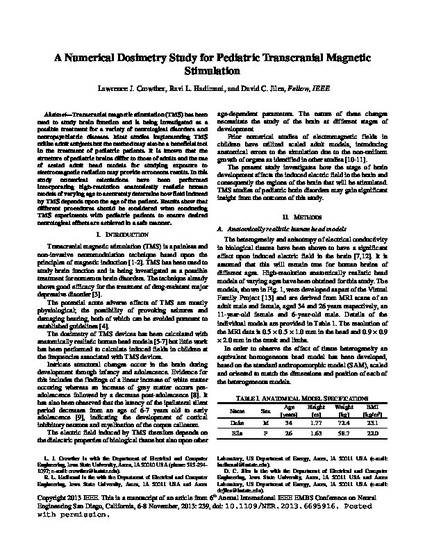
Transcranial magnetic stimulation (TMS) has been used to study brain function and is being investigated as a possible treatment for a variety of neurological disorders and neuropsychiatric diseases. Most studies implementing TMS utilize adult subjects but the method may also be a beneficial tool in the treatment of pediatric patients. It is known that the structure of pediatric brains differ to those of adults and the use of scaled adult head models for studying exposure to electromagnetic radiation may provide erroneous results. In this study numerical calculations have been performed incorporating high-resolution anatomically realistic human models of varying age to accurately determine how field induced by TMS depends upon the age of the patient. Results show that different protocols should be considered when conducting TMS experiments with pediatric patients to ensure desired neurological effects are achieved in a safe manner.
Available at: http://works.bepress.com/david_jiles/135/

Copyright 2013 IEEE. This is a manuscript of an article from 6th Annual International IEEE EMBS Conference on Neural Engineering San Diego, California, 6-8 November, 2013: 239, doi: 10.1109/NER.2013.6695916. Posted with permission.